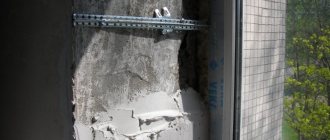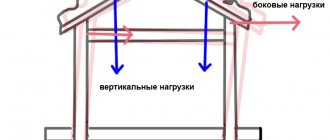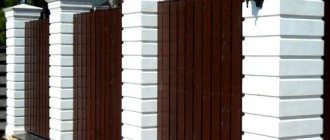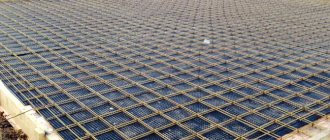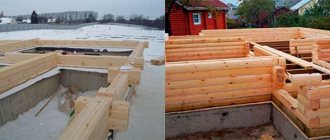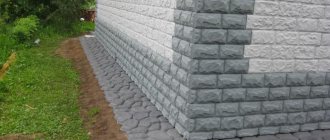Arrangement of the local area of a private house, dacha or country cottage requires the mandatory installation of fencing structures. Each fence, regardless of its size and material of manufacture, performs several functions at once, protecting property and decorating it as a decorative element of landscape design.
It is to maintain the latter function that it is important to ensure the aesthetic appeal of the entire structure and to correctly choose its configuration and color scheme.
A stylish and modern green fence is an ideal option for arranging an area with a green lawn, but when choosing shades and materials, it is important to rely on the experience of specialists.
Zoning space with hedges
The dacha must have systemic zoning. Vegetable and garden plantings should less often be mixed in one large complex; this will completely violate the original idea of the landscape design. Zoning is carried out by laying paths and installing wickerwork, but the most popular recently are living bushes that separate one space from another. This is done with completely different crops, for example, hornbeam bushes, a densely growing perennial, work well. Its hard leaves hold their shape perfectly, allowing it to be seriously regarded as a low, strong fence.
Classification of hedges by height
Living fences are made of different heights and thicknesses. They can be:
- low – up to 50 cm;
- medium - from 60 cm to 1.5 m;
- high - over 1.5 m.
Attention!
Experts recommend, if space allows, to opt for a multi-row option of different levels.
A planting of one type of plant with leaves of different colors, or a combination of different varieties, looks great. However, it is necessary to take into account their survival rate on the ground, the speed at which they grow, their flowering time, frost resistance, and their requirements for care.
Zoning
Plants can be used to zone areas into functional areas. Thanks to this planning, the environment will become comfortable and attractive. A dense wall of trees will help protect the playing area from the sun's rays. For the children's area, you should not choose thorny plants or those whose fruits are inedible. For a recreation area you can plant bushes:
- sea buckthorn;
- elderberries;
- hawthorn;
- barberry;
- rosehip;
- lilac;
- viburnum of a certain variety.
In addition to beauty, the blackcurrant hedge pleases with its fruits. A suitable flower is the tea rose, which blooms for a long time, exuding a magnificent aroma. In order for the green fence to be reliably protected as a fence in landscape design, it is recommended to strengthen it with a second tier.
Living wall
A living wall means green fences, the height of which is more than 2 m. Trees that tolerate pruning are used for them:
- juniper;
- spruce;
- common hornbeam;
- thuja;
- white globular willow;
- Linden.
Most often, trees are planted on the street side along the border of the territory. Ornamental shrubs can be planted in front. They will cover the bottom and all gaps. Flowering border plants are often planted at the foot. Thanks to the high wall, the land and plantings on the site will be protected from strong winds and erosion.
Attention!
It must be borne in mind that it will take a long time before the hedge becomes tall.
Borders for lawns and flower beds
Borders are considered to be fences smaller than 1 m. On a site, they frame flower beds, mark zones, or are simply used for decoration. The path in the country can also be framed with curbs. Certain types of flowering and herbaceous plants and shrubs are well suited for beauty. You can plant:
- hawthorn;
- cotoneaster;
- barberry;
- dwarf jasmine species;
- low-growing boxwood;
- western thuja;
- columnar juniper.
It is better to give some shrubs a rectangular shape, for example, hawthorn and barberry.
Curly trimming of a green fence
In addition to simple rectangular flowerbed compositions, lately there have often been bushes arranged in a certain geometry. Great variety is achieved by the difference in textures and the skill of the gardener, because the correct haircut gives different shapes. The few plants that survive well without additional pruning - cypress and pear - have different shades, slightly different leaf colors, thereby standing out favorably compared to others. The obligatory spread of textures is important, beauty and clarity of contours are also important. There are an incredible variety of types inside specially equipped park areas, making them look diverse and beautiful. When planting with some kind of intricate geometry, it is necessary to take into account the individual growth characteristics of each bush, otherwise it will simply be impossible to constantly prune during the heat, a period of active growth.
Trimming a green fence in waves
Wave-like plantings are possible thanks to constantly emerging new shoots. Bushes that are initially trimmed always grow naturally. If the bush grows in patches, unevenly, it is probably better to get rid of the unwanted length and extra shoots. However, sometimes the shoots grow at the same time and are trimmed in the same wave pattern. To make the wave even, gardening beginners use special stencils that they make themselves. However, professionals do this work easily. Wavy fences have been very popular since the time of Peter the Great, when marine fashion generally dominated; accordingly, the continuity of marine traditions was passed on over the years, reaching the modern decoration of palace gardens, from there it became popular for private garden plots.
If there is still an idea to allow them to exist unhindered, there is no particular need for contrasting, textured planting, they need to be given maximum space. Often, if one part comes out crooked, and the second goes faster and smoother, you can try cutting the uneven side once, perhaps the next time it will come out straight. Also, if one part of the bush grows faster than the other, you can wait until the poorly growing one grows, while periodically pruning the actively growing one. In this way they gradually achieve equal growth.
Fashionable mix for a green fence
Planting green spaces is a very difficult stage of a florist’s work. In addition, you need to find the ideal crops, shape, size, you need to mix them so that the green hedge turns out to be more lively and less monotonous. For this task, plantings are selected that will combine as much as possible externally, as well as with their biological properties. This is important for a number of reasons:
- The roots should not clog each other. Of course, it is difficult to compare crops bred by special breeding methods with weed roots, but some do not get along well with each other.
- Flowering should also look harmonious as a single combination, when the flowers together look ugly, for example, thin bells are clogged with broad-leaved roses, the picture generally turns out ugly, although growing took a lot of effort and money.
- It is important that bushes, flowers, trees are combined with ground buildings. Wooden structures are perfectly complemented by gabions, wickerwork beautifully curled with mesh or wickerwork, creating a wonderful ensemble like a living wall. Thus, each tree will become an excellent additional design to the existing landscape design delights.
How to make a hedge at your dacha with your own hands
A green fence is a fence made entirely of real, living plants.
An absolutely environmentally friendly product that can perform the functions of analog structures made of metal, plastic, wood, concrete, brick, and so on.
Despite its apparent simplicity, this type of fence fully copes with its intended purpose, namely, it sufficiently protects the territory from unappointed visits and hides a person’s possessions from prying eyes.
Unlike other types of protective structures, it not only does not disturb the local ecology, but also improves the quality of the area. The increased amount of vegetation promotes additional air filtration, does not emit poisonous substances, and many varieties bear edible fruits. Some breeds produce fruits used for medicinal purposes, which are part of the composition of medicinal products.
Like any other structure, it has a number of positive and negative qualities.
The advantages of this material include:
- no need for additional finishing, the finished product does not require additional finishing, such as plastering, painting, paneling, etc.;
- perfectly hides the shortcomings existing on the dacha territory, both on the site itself and on the erected buildings;
- attracts pollinating insects: this ability of a natural fence increases the productivity of the planted garden and improves the flowering of planted ornamental plants.
The only downside is that the green fence will need to be maintained, fertilized, and mechanically processed. Annuals generally need to be completely dug up at the end of the season, and replanted at the beginning of the next. It is impossible not to note the speed of formation of green protection. Many trees and shrubs will require considerable patience on the part of the land owner. It will take many years of constant care for the grown hedge to be lush, beautiful, and healthy.
Organizing a place for a green fence
Many have noticed that if you organize a hay from wicker grapes, for example, in the summer it will be much cooler behind this wall. Accordingly, with plants, mainly climbing ones, it is possible to shade recreation areas and cozy patios. Almost all loaches are suitable in this way, except for heavily flowering ones. It is important to understand that there will always be midges inside the thickets; if there is flowering, additional wasps will arrive. Therefore, wild grapes ideally organize a gazebo, even if there are no walls or ceiling around.
Should I leave shoots on the fence?
It is important to do this so that the main planting grows to its full potential. If you cut off all new cuttings, the tree may stop growing normally, so it is better to leave a few. In addition, they can give the crown more volume, a circumstance that is very important when maintaining a decent appearance of the hedge. Young shoots, among other things, have an attractive soft green color, so they always look fresh and polished. Also, cut shoots are formed into new bushes if they reproduce in a similar way. Trees that are ideally suited include hornbeam, beech, and oaks.
Multi-tiered green fence
Planting garden crops along with shrubs and trees has become a kind of trend. They combine colors, thrive together, and also look harmonious, because fruit crops are suitable for almost all types. In addition, fruit and berry bushes are usually quite low. It is this combination that ensures work in several low tiers. Professionals in floristry use more complex elements with similar structures entwined with moss, but non-professional beginners in the world of landscape design will find it much more difficult to do this, so the cost of the project will increase significantly. Therefore, tiers of garden strawberries and photinias combined with spirea are very suitable. A fence made in relief looks more alive, because it most accurately repeats natural landscape forms.
Corner hedge combination for the garden
Plants combined with structures made of wicker, wood, or mesh can be placed as an analogue of an entire fence or encircled corners with them. Forest beech is ideal for such purposes. It grows a little wide, so it is not necessary to constantly trim the sides. Also, planted bushes sprout rather slowly, which helps simplify the task of eliminating them. The tree has a dense crown, so it looks like a full-fledged frame, blocking the view of what is happening inside the site. These options go well with wooden buildings, preferably even chopped ones, made from semicircles of a log house. They look very interesting, original, and are an excellent complement to the rustic style, which is very popular today when organizing gardening spaces.
Coniferous, deciduous and climbing fences
Depending on the type of plant, there are several types of hedges. If you want the fence to look beautiful all year round, then it is better to choose coniferous plants to create it. They are easy to care for and lend themselves well to shaping, and also fill the air with an unobtrusive and pleasant aroma.
The most common options for coniferous fences are the following:
- thuja;
- spruce;
- yew berry;
- mountain pine;
- common barberry.
Juniper is also great for decorating a fence. It grows quickly and recovers well after cutting. From this plant you can create interesting fences in the form of pyramids, balls, etc.
Deciduous fences can be evergreen or deciduous. Unlike conifers, they grow much faster, and their colors are simply amazing in their variety of shades. But they are quite capricious to care for, since they need fertile and constantly moist soil. And from a lack of sunny color they can lose their decorative appearance.
A deciduous fence looks good with the following types of plants:
- barberry;
- spirea;
- hawthorn;
- boxwood;
- chokeberry cotoneaster.
Curly fences look quite interesting, but they need strong supports. Many people use such plants to decorate artificial fences. The convenience of such a fence is that it grows quickly. And the more different varieties are used in it, the more interesting it looks.
The following plants are perfect for creating a climbing hedge:
- hop;
- ivy;
- Chinese lemongrass;
- clematis.
Climbing fences look great with flowering annuals, but for this it is best to choose varieties that bloom at different times.
A hedge will be an excellent addition to the decor on your site.
Arches for plants in the garden
Living arches and windows in the country are now even more popular than hedges. They are most common again during the tsarist times, when huge gardens were laid out and it was there that the royals spent their leisure time. However, times have passed, but the love for landscape beauty remains. Thus, modern areas that have dedicated areas for organizing a patio are often decorated with similar beauty. As a rule, specially constructed frames lie within the specifics:
- Metal pipes , welded with an arch, are dug in at a depth of about 50 cm; unlike intake pipes, they will feel less wind vibrations due to the through passage of air. They are either dug in well, or a small hole is dug, covered with fine-grained crushed stone, a pipe is inserted, and concrete is poured on top to an even layer. A small concreted area can be decorated with vines climbing across the floor. Such arches last a long time, serve for a long time, do not collapse, do not need processing, and are always very durable. The only negative is that to make additional hooks for bindweed, you will have to use a drill or other tools.
- Wooden frames, on the other hand, are much easier to install. Due to the fact that the wood is rough and is better “grabbed” by the earth, the legs do not need to be concreted, just dig in well, deeply, from 80 centimeters and deeper. The wood is more pleasant and will look more natural. It is much more convenient to nail small carnations during the process of bindweed growth and tie threads on them, which then serve as a kind of ladder along which the greenery is woven.
Coniferous hedges
Making a hedge from coniferous plants will not be expensive or difficult. However, this is not a quick process, and the growth of one such fence can take at least three years. Another, not so significant drawback of coniferous fences is their unchanging appearance. Both in winter and in summer, fir, juniper and spruce enliven the garden with greenery, but do not bloom.
To add color to a living fence, evergreen conifers can be used as a background. Both traditional garden flowers and alpine plants look great next to them.
Thuja hedge
Thuja hedge
The life tree serves as a barrier against penetration into the territory, perfectly protects the garden from exhaust gases, extraneous noise and dust from the street, retains snow and masks unaesthetic buildings outside the site.
A living thuja fence, with proper care, will never fall off or wither. Thuja is one of the easiest to care for and unpretentious evergreens. It easily tolerates molding and replanting.
Scheme for planting a hedge of thuja In order to create a dense, impenetrable living wall of plants, planting must be done in one row every 40-80 cm, depending on the garden shape of the tree.
It is best to form a green wall from small 4-year-old seedlings - they take root faster and cost less.
Spruce hedge
The most common varieties that are used to form a hedge of spruce include: prickly, oriental, Siberian, purple and gray spruce. The dense crown and good branching of these conifers completely obscures the view of the site and clearly defines the boundaries of the garden areas.
Coniferous young trees are planted in warm autumn, in fairly loose and moist soil in trenches up to 50 cm deep. When planting a single-row coniferous hedge, maintain a distance of 1 m between seedlings. In the case of a double-row planting (as in the hedge diagram just below), the interval between the trees must be at least 80 cm.
Juniper hedge
Impenetrable thickets can be created using Cossack juniper with green or bluish needles. A quickly growing hedge will be formed by Virginia juniper. But an ordinary one, with slow growth, will grow in the garden for a very, very long time (almost 200 years). But if you don’t intend to live that long, then scaly or Chinese juniper will be quite suitable for you as a green fence. They branch well and easily withstand severe frosts.
To minimize random free openings, juniper seedlings are planted in a checkerboard pattern with a large lump of earth. Over time, when the trees grow a little, it is necessary to cut off all the tops evenly. This will make the juniper look as neat as possible.
Variety of plants in a living fence
With a large abundance of garden crops, it is strange to use only a couple of varieties. If earlier the land was partially suitable for planting, for example, thuja, today there are many fertilizers, chemical, natural, that allow you to balance the soil at the dacha and give it the necessary: looseness, acidity, alkalinity, salinity. Fences that combine three types inside themselves look very interesting and unusual. Bush trees go well with thujas and wooden fences. It seems that combining greens is not difficult, however, when faced directly, planting crops seems difficult, because one comes to understand the great variety of varieties. Such plantings are complicated in that the soil will have to be fertilized based on the needs of all crops, that is, it is necessary to select species that accept the same soil.
How to choose seedlings for planting in a summer cottage
When choosing plants for a future fencing structure, it is important to pay attention to the classification in order to find exactly what is suitable for a particular owner of the land.
Trees, shrubs, and grasses are classified according to their height:
- short;
- medium height;
- tall.
According to the degree of care requirements:
- unpretentious;
- requiring regular care.
The soil for planting vegetation is also a determining factor:
- not picky about the composition of the soil;
- compliance with the acidity level of the earth;
- demanding on land composition;
- survival in any or specific climate.
It is important to pay attention to the pliability of vegetation to mechanical processing. There are varieties that do not require systematic pruning, but do not lose their decorative qualities. Not all varieties require mandatory sanitary pruning. Some varieties will need to be pruned regularly to maintain a neat appearance and healthy condition. If possible, it is allowed to create trees and shrubs of various shapes.
Evergreen varieties are best suited for those people who want to see a beautiful and reliable fence for their site for the entire 12 months. These breeds do not shed greenery, exposing trunks and branches, opening the passage for wild animals.
You need to keep in mind how hardy the planted vegetation is. It is necessary to select seedlings in such a way that the plantings can take root in the given climatic conditions and tolerate negative temperatures, frosts, and the first frosts. Also, some varieties can often get sick from changing soil or excessive moisture. In this case, the possibility and speed of restoration of the tree, shrub, and grass are taken into account.
It is allowed to combine different breeds, families, and groups of green fences. In order to improve the decorative qualities of the protective structure, various subspecies are planted, differing, for example, in the color of the foliage, the shade of the flowers, and the splendor of the crown. Green hedges are formed from rocks of different heights. For example, the first tier is formed from trees, the second level is made up of shrubs, and the final row is created from border grasses. Here it is important to observe the approximate growth rate, flowering period, and fruiting of seedlings. Thus, during the flowering of a living fence, the effectiveness, beauty, and aesthetics will be increased many times over.
https://www.youtube.com/watch?v=ICNbAq-xnyI&ab_channel
An important factor will be the intended purpose of the fence. Plant a green fence instead of the main fence or along the structure to enhance its decorative characteristics. Low-growing varieties are best suited for forming borders, edging garden paths, and forming the first tier if multi-tiered planting is done. Trees and bushes of medium height directly form the fence itself, and the lushness, bushiness, and size of the root system will indicate the expected density of the fence. Tall plants are designed to form hedges. Such a fence can completely hide the dacha area from prying eyes. Densely planted lush trees will create an impassable barrier against the invasion of uninvited visitors.
Many species bear fruit with edible berries, which are not only sweet, but also useful, used for medicinal purposes. There are green shrubs with berries that are listed in many sources as poisonous. But you shouldn’t be so afraid of planting them: the poison content in berry juice is so low that a person, especially an adult, will need to eat a lot of fruits to get mild poisoning.
The quality of the fence directly depends on the quality of the material used to plant the hedge. Seedlings purchased from untrusted hands may take root poorly or even die; there is a high risk of acquiring a similar variety that grows wild. Purchases should be made in specially designated stores and nurseries.
Do not be upset if carefully selected seedlings were unable to take root on the provided land. The survival and growth of vegetation is influenced by many factors, including climate characteristics, the nuances of seedling development, the purity of the air, the number of insects living in a given space, and so on. Not all owners of dacha plots know, few warn them, but some varieties cannot be planted too early. So it is better to choose perennial plants that are 5-6 years old as material. Younger seedlings take root very poorly, they are still weak, often begin to get sick, and die from ignorance of the time and age of planting.
The tops of grown plants, especially trees, are loved by birds to settle in, weave nests, and raise chicks. This seemingly unimportant fact has a significant impact on other flora on the site: feathered animals willingly eat insects living in the designated area. The fewer pests, the greater the chance of getting a healthy, beautiful hedge.
When the owner of a piece of land wants to increase the protective functions of natural defenses, one should pay attention to the subspecies of vegetation with thorns: blackthorn, oleaginus, barberry or pyracantha.
If the owner wants to save the construction budget, you can choose such an option that, having bought one large shrub, the gardener can divide it into several small bushes and plant them at some distance from each other.
When choosing future plantings, it is necessary to take into account your physical capabilities, select seedlings based on the time actually possible for the cost of care. This characteristic can save time, the owner’s nerves, as well as the vegetation itself. If it is not possible to regularly take care of a living fence, you need to choose seedlings from those varieties that are the most unpretentious, with increased stability qualities that do not require regular care.
Stages of growing a green fence
A living fence looks beautiful, aesthetically pleasing, and visually attracts attention due to its unusual nature. However, in order to grow it beautiful with your own hands, you need to put in a lot of effort. Planting and care is a high-tech process, so all stages of participation are important. That is why following the key rules plays an important role in creating the living fence of your dreams.
- Regular pruning is a very important task. It is this that helps get rid of unwanted shoots and dried branches. This must be done regularly. The best period is the end of June, but there are species that grow too quickly. For these, there is repeated pruning, which is best done in August. It is important to carefully trim the freshly introduced plants and trim them precisely along the end of the branch phalanx. When it is not possible to carry out a neat haircut, it is better to wait. There will be enough time until the end of summer for final growth. Regular haircut will help you become juicier, fuller, and always maintain good shape. An important point: garden conifers such as cypress, thuja, and proho accept frequent pruning and regularly produce new shoots, so pruning should be done with extreme caution.
- Giving shape is a key point in determining what the hedge will be like. Recently, the trapezoidal shape has become very popular. The composition differs in the following: the lower branches receive enough light due to the narrower top, which makes it possible to grow proportionally over the entire height. Hornbeam, boxwood, and yew can be placed in a rectangular shape, since these trees love shade, which in no way affects growth. The rounded shape is better collected by spreading plants: cherry laurel, privet, thuja, barberry. You need to calculate how more light gets in and set based on these parameters, because they are ideal for giving rounded shapes, although they also love light.
A few tips for beginning gardeners
A living fence of complex shape should be cut with your own hands according to a template. It is assembled from thick cardboard, cutting out openings of a given shape.
Hedge trimming using a pattern
If there are bird nests in the hedges at your dacha, trimming will have to be postponed until the chicks have fledged from them.
Green coniferous fences are not trimmed later than the end of August. This is due to the problem of woody shoots. They may not have time to take on the desired form before the cold weather begins and will eventually freeze out.
Regularly trimmed living fences are systematically fertilized. It is advisable to feed them with multicomponent formulations.
Hedges need regular feeding
When purchasing scissors for trimming hedges, make sure that their blades are not too massive. Do not forget that the tool should fit comfortably in your hand, then the work will not be so tiring.
After cutting, the scissors are wiped off the remaining juice with a rag moistened with oil and preserved.
Planting a living fence
In order to plant everything correctly, the territory is pre-marked. Planting a hedge occurs in much the same way. A single trench is dug, similar to a strip foundation, but of small depth. The depth should correspond to the following parameter: flowers, bushes, trees should sit similarly to the pot before planting in an open space. It is much more rational and less labor-intensive to dig one large trench than many small holes. Before planting, the bottom is filled with compost, growth additives, and roots so that the roots better accept the new soil. These actions, along with creating a foundation, are necessary to secure the bushes. When planting, it is better to immediately take care of the quality of the soil and bait. Otherwise, when all the plants go and one withers, it will be, firstly, not easy to change it, and secondly, for a while (it is not clear how long) it will be goodbye to the uniform beautiful appearance of the hedge.
After feeding, they cover it with soil, loosen it a little so that the soil absorbs moisture better, then water it abundantly. The first watering is the most important, because deep soil will be barely moist; the roots do not have enough of that amount. During the first watering, water must certainly reach the tips of the roots, the very depths. When loosening is done correctly, there won't be a huge puddle around the fence. It is important to ensure that there are no accumulations of water stagnation.
Landing rules
To create a green fence or hedge, you must first decide on the choice of plants. It is desirable that they all be of the same age . Young plants can be planted on the sunny side, as they grow quite quickly in such conditions. But in shaded areas you should buy 7 or 8 year old seedlings. It is best to start planting in the spring.
To do this, you need to make a marking on the site and dig a trench along it with a depth of 30 to 60 cm. The depth directly depends on the root system of the seedlings. The topsoil should be carefully set aside along with the grass.
A fertile layer of soil should be placed at the bottom of the trench. To do this, the excavated soil is mixed well with organic fertilizers. Having filled the trench exactly halfway, it should be watered well, and then the remaining soil should be added. After such procedures, the soil will be soft, moist and ready for planting.
To plant seedlings you need to make holes. The distance between the holes and their depth depend on the type of planting and type of plants. For example, when planting in a single row, holes should be dug at a distance of 30 to 70 cm.
Immediately after planting, the plants should be watered abundantly and sprinkled with peat, crushed bark or humus on top - this will ensure that the moisture remains in the ground for a long time.
In the first year, seedlings need to be constantly watered, loosen the soil under them and remove weeds, and in the fall they should be pruned. Moreover, even a free-growing hedge needs pruning to give it the correct shape. And after this procedure, the bushes begin to branch better.
Ready-made options
Patient gardeners who know a lot about care can buy seedlings, plant and grow them on their own. Not everyone has such skills. The rest, in order not to give up the dream of creating a living fence, can buy a ready-made option. It will cost much more, and this is how you can guarantee the greatest success of the landing. So, for example, you can draw an analogy with a lawn. There is a sowing lawn, it is sown with specially prepared soil, the grains are actively watered, and they wait until it sprouts. At first you cannot walk on it; after the first mowing, the lawn becomes stable and ready for use. If planted unevenly, it will have bald spots that need to be replanted. This option is much more complex; lawn seeds are relatively inexpensive. There is another option: rolled lawn is sold in almost all stores that sell garden plants. It is rolled out in rolls, taking into account the required square footage, specially prepared soil covered with a special film, after which an irrigation system is organized. Two processes are completely different in their technology, labor costs, and price, leading to the same results. They also work with living fences.
A hedge of deciduous shrubs and trees
To create a hedge, fast-growing shrubs and trees with a dense crown and can easily tolerate pruning are selected. The number one plant in all respects is the common privet.
It can be used to form a hedge of any shape and height, and the dense interweaving of its densely leafy branches creates an impenetrable barrier.
Plant species
For plantings, there are various types of garden crops, which are used to create living fences, sometimes even entire garden complexes. Varieties are very important, because each is designed for certain weather conditions, soil, and amount of watering. Thus, thoughtful selection tactics will help you create the perfect ensemble. An analogy can be drawn. Let's say an aquarium needs to be stocked with fish. There are different types of fish: water, food, temperature, many of these parameters are individual. There are predators that eat others, it is better to keep them away. Therefore, the aquarium is populated with fish that match each other according to a number of certain parameters. The plant world lives about the same. Plants that are best suited for a living fence:
- Boxwood is low, more suitable for framing flower beds, beds, and sidewalk paths. The small-leaved option is the most successful. It is avoided by insects, grows less spreadingly, and requires little care. Modern breeding methods have produced higher varieties that make it possible to create full-fledged plantings. If you want large-leaved plants, you should look for fireworm caterpillars. It is better to completely eliminate fertilizers containing nitrogen.
- Field maple is, of course, a small tree that can often be found in large city parks. It is slightly smaller in size, tolerates pruning well, and is unpretentious in terms of soil quality. In autumn the leaves turn yellow. It grows very quickly, so it will have to be pruned more than twice a year. It also sheds its leaves in winter, so when there is a need to constantly cover a fenced area, field maple is a dubious option.
- barberry has protective properties. Thanks to the thorny branches, it is almost impossible to get through it, a similar comparison is to stringing barbed wire. Accordingly, caring also becomes more difficult. The branches are so dense that even in winter, thanks to their dense weave, they cover the area well. You should only work with gloves, otherwise it’s very easy to get hurt.
- About hornbeam , its properties have already been mentioned above. Grows almost everywhere, loves shade and sun. In autumn, the leaves become yellower until the shoots grow. It grows back quickly, even after heavy pruning. The relatively cheap price allows you to purchase even the most economical fencing options. It is also better to cut your hair twice a year. Susceptible to attacks by caterpillars, you need to constantly monitor, protect the leaves, and fight insects. Affected leaves must be treated.
- cherry laurel where there are no small children or overly curious animals. The shoots are small red berries, identical in appearance to cherries. They are inedible, even poisonous. You can prevent their appearance by trimming the buds before shoots form. A distinctive feature is the evergreen leaves, which cover the garden area even in winter. The varieties are very hardy and need to be pruned once a year. It suffers from a sharply continental climate, plenty of sun, and severe frosts.
- Lawson's cypress is a coniferous type that has different colors, depending on the variety. It is found in greenish, blue, and reddish shades. It maintains its crown every year, so it reliably protects the site all year round. Pruning must be done extremely carefully; excessive pruning of branches is strictly contraindicated. A shade-tolerant tall planting that can please its owners all year round.
- Larch is a coniferous tree that incredibly loves the sun. Stays in good shape all year round. The only seasonal changes are that by winter the color of the needles changes - green turns yellow, after which it completely sheds its needles. It has very beautiful cones, grows well after pruning right up to the old trunk.
- Beech can grow in shaded areas and easily tolerates lack of direct sunlight. The leaves remain on the branches for a long time, until winter, and sometimes partially fall off. It tolerates pruning well; it is best to do it twice a year. It hates drought, so constant full watering is recommended in hot weather.
- Privet is a small green shrub that blooms in summer with small white flowers. Black fruits set in autumn. Spreading type, pruned twice a year. It does not like sharp frosts; it takes a long time to shed its leaves; if the weather is moderately cold, the temperature remains at approximately the same level.
- Photinia is a popular evergreen planting. Its dense foliage perfectly covers the site all year round. In summer it produces red shoots. Does not tolerate cold well, but tolerates heat and drought well. It is recommended to plant in regions with a warm climate and no frost.
- Berry yew grows slowly, like most conifers. Holds up well in the sun, in the shade, and is resistant to weather conditions. Trimmed once a season, the hedge creates a relatively low hedge, suitable to replace boxwood. An obvious drawback is the high toxicity of the bark, needles, and berries.
- Western thuja is an evergreen coniferous tree that is relatively inexpensive. Perfect for creating a hedge. Always creates the effect of dense plantings. Pruned once a year. Requires regular watering, poisonous.
- Fargesia Muriel is a bamboo-shaped, bush-like, evergreen. Gets along well with the sun, shade, unpretentious. Leaves sometimes curl due to lack of moisture or excessive cold.
The choice largely depends on regional weather conditions. Few people can endure the harsh continental climate, but unfavorable weather conditions will not prevent the cultivation of green hedges on the site. A well-chosen location, marked space, and prepared soil will create ideal conditions for future plantings. You don't have to be a professional gardener to plant the garden of your dreams and frame it with greenery.
Selection of plants
“It is very important that after cutting the hedge quickly recovers and has a tendency to form shoots”
When you decide to grow a hedge with your own hands, select plants for planting that have already been tested in this quality and feel good in the proposed climatic conditions. Take a closer look at winter-hardy, unpretentious species with dense foliage. It is very important that after cutting the hedge quickly recovers and has a tendency to form shoots.
Of the trees that should attract your attention:
- maple;
- thorn
- hornbeam.
Hornbeam hedge
From bush-like:
- hawthorn;
- privet;
- cotoneaster;
- jasmine.
Living fences made of rhododendron, lilac, sea buckthorn, wrinkled rose, serviceberry, and honeysuckle look aesthetically pleasing. Plants should have small foliage so that after trimming the hedge it is possible to obtain a smooth surface.
Green hawthorn fence
